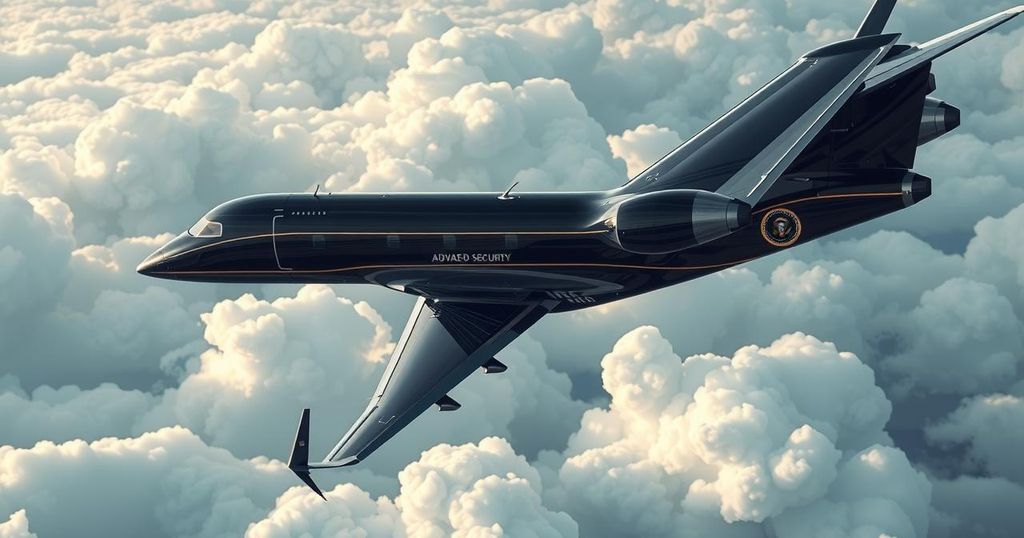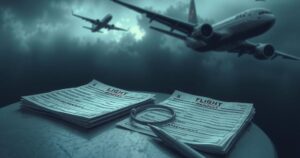What It Would Take to Convert a Qatari Jet into Air Force One for Trump

President Trump seeks to convert a Qatari luxury jet into Air Force One, but potential security modifications could complicate and elongate this project. Costs for retrofit are estimated to soar, and discussions around waiving some security standards arise as Trump aims to have the jet operational before his term concludes. Concerns from officials about national security risks accompany this push for a faster timeline.
Washington, D.C. – President Donald Trump’s wish for an upgraded Air Force One could raise some significant security concerns. The feasibility of converting a luxury Qatari jet into the presidential aircraft hangs in the balance as legal experts consider the arrangements necessary for such a move. The modifications needed for the aircraft to meet security standards could send the project spiraling into delays and cost overruns similar to Boeing’s ongoing struggle with the Air Force One replacement initiative.
Air Force Secretary Troy Meink informed legislators recently that the adjustments to ensure security on the Qatari jet could approach $400 million. Explicit details were not disclosed, however, there are critical unanswered questions regarding equipment updates and timelines. Notably, the desire to have the plane operational before Trump’s term ends may necessitate overlooking certain safety features.
The president, having survived two assassination attempts and being aware of threats, including alleged plots from Iran, is known to take some security risks. For example, despite the risks of cyber intrusions, he prefers having his personal phone available. In fact, Trump remarked this week about acquiring the Qatari jet “for free,” asserting the necessity of using it as Air Force One until the replacements are ready.
Air Force One refers to any aircraft carrying the president. Historical records detail that the inaugural plane, a C-54 Skymaster, transported Franklin D. Roosevelt to the Yalta Conference back in 1945. Today’s requirements demand much more; the Air Force is working on two 747s that are expected to cost over $5.3 billion and may not be delivered before Trump exits office.
Details outlined in a 2021 report highlight that the new 747s will prioritize survivability and communications. Over a decade ago, it was determined that having four engines was imperative for the new planes. However, since 747s are no longer being produced, securing spare parts could present additional challenges. Critical to the mission of Air Force One are capabilities like advanced classified communications, defensive mechanisms against foreign eyes, and systems to reassure stable command during national emergencies.
Meanwhile, some estimates suggest that retrofitting the Qatari plane to meet presidential specs could escalate costs to about $1.5 billion and extend the project timeline considerably. However, Meink has downplayed these forecasts, asserting that certain expenses would be incurred regardless while the Air Force prepares for long-term aircraft needs. In a different conversation, Rep. Joe Courtney indicated that, based on established costs for new planes, modifications alone could run about $1 billion.
Ex-Secretary James emphasized that retrofitting would require almost starting from scratch due to extensive rewiring needs. Trump, as the commander-in-chief, might choose to waive some of these security specifications. Notably, he could opt against installing EMP shielding, risking communications that could become susceptible in a crisis.
With considerations to the enhancements on the plane’s aesthetics, Trump reportedly keeps a model of a newly designed Air Force One displaying a color scheme reminiscent of his personal aircraft. During a recent tour of the Qatari jet, which was on display near his Mar-a-Lago resort, important military leaders, including Air Force chief Gen. David Allvin, were present.
There are ongoing discussions about the maintenance of the jet, described as much in line with expectations for a complex four-engine aircraft. Senator Tammy Duckworth raised concerns on the potential repercussions of deploying the president aboard an aircraft that might not withstand severe threats, calling it “irresponsible” and a possible misuse of taxpayer funds.
Lastly, potential delays could also impact Boeing’s project, which is currently grappling with issues like stress corrosion and noise problems. The company has deferred questions to the Air Force, which stated it continues to work with Boeing to expedite at least one 747.
Whether Trump can navigate the multiple challenges involved in turning the Qatari jet into a suitable transport remains uncertain. “There’s potential for delays in certifications,” James noted. “But these days, it seems certain requirements are often waived if the president desires it.”
In summary, President Trump’s aspiration to pilot a Qatari jet as Air Force One is fraught with complications largely related to security modifications and costs. Despite the allure of an upgraded aircraft, the intricacies of making it secure for presidential use pose a significant challenge. The scale of required retrofitting could run into the billions, while time constraints also loom over the project. Ultimately, the decision to waive or adhere to these security protocols will rest with Trump, who has confidently expressed his desire to utilize the jet while raising serious issues surrounding national security and taxpayer interests.
Original Source: www.thespec.com






